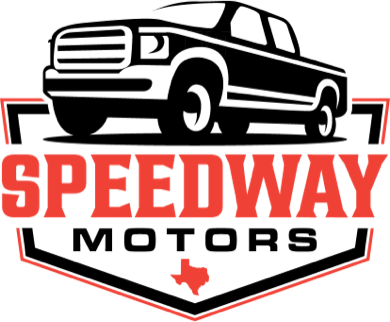In-House Financing vs Bank Loans: Which is Better?

When buying a car, you’ll likely choose between in-house financing (handled by dealerships) or bank loans (offered by banks or credit unions). Here’s a quick breakdown:
- In-House Financing: Easier approval, even with bad credit, same-day approvals, flexible payment plans, but higher interest rates (can exceed 15%) and limited vehicle options.
- Bank Loans: Lower interest rates (around 9 to 18% APR), better consumer protections, and freedom to buy from any seller, but require good credit, more paperwork, and take longer to process.
Quick Comparison
| Feature | In-House Financing | Bank Loans |
|---|---|---|
| Approval Time | Same-day | 1–3 business days |
| Credit Check | Flexible or none | Requires good credit (650+) |
| Interest Rates | Higher (24%+ APR) | Lower (5.5–6.5% APR) |
| Down Payment | 20% Typically Required | 10–20% Typically Required |
| Vehicle Options | Limited to dealership | Any seller |
| Payment Terms | Flexible | Fixed monthly payments |
Key takeaway: If you need a car quickly or have poor credit, in-house financing might work. But if you qualify, bank loans save money long-term with lower interest rates and better protections.
In House Financing vs Bank Loans: Understanding Your Options
In-House Financing Explained
In-house financing, also known as “buy here, pay here” (BHPH), is a setup where dealerships handle both the sale of the vehicle and the loan. This approach is often geared toward buyers who might struggle to get approved through traditional lenders.
What is In-House Financing?
This type of financing differs from traditional bank loans in several ways:
- Quick approvals: Buyers can often get approved and drive off the same day.
- Relaxed credit checks: Many dealerships either skip or simplify the credit check process.
- Direct payment system: Payments are made directly to the dealership.
- Flexible schedules: Payment plans can be tailored, like weekly or bi-weekly options.
Benefits of In-House Financing
| Benefit | Details |
|---|---|
| Easier Approval | Works for buyers with little or no credit. |
| Fast Process | Financing decisions are made quickly. |
| Payment Options | Offers more adaptable payment schedules. |
| Customer Support | Dealerships often provide direct assistance. |
These features make it a practical choice for those with credit issues or those needing a fast solution.
Drawbacks of In-House Financing
- Higher Interest Rates: Some loans come with APRs as high as 300% [1].
- Limited Selection: Inventory often includes older vehicle models.
- Precomputed Interest: This setup can discourage paying off loans early.
- Fewer Protections: Consumer protections are typically less robust compared to bank loans [1].
While in-house financing can help buyers with limited options, it’s essential to weigh these drawbacks against alternatives like traditional bank loans.
Bank Loans Explained
Bank loans are financing options offered by banks or credit unions to help you purchase a vehicle. These loans involve working with a lender outside of the dealership.
What is a Bank Loan?
To qualify for a bank loan, you’ll usually need a solid credit score and a down payment of 10-20%. The approval process typically takes 1-3 business days. Interest rates for new cars generally fall between 9% and 18% APR, making this a good choice for buyers who meet the requirements.
Advantages of Bank Loans
Here’s why many buyers opt for bank loans:
- Fixed Interest Rates: Monthly payments stay consistent throughout the loan term.
- Flexible Repayment Terms: Longer terms allow you to structure payments to suit your budget.
- Consumer Protections: Federal regulations ensure clear and fair loan terms.
Downsides of Bank Loans
While bank loans have their perks, there are some challenges:
- Strict Eligibility Requirements: You’ll need strong credit, a steady income, and plenty of paperwork.
- Slower Approval Process: It can take a few days to get approved, which might not work for urgent purchases.
- Higher Upfront Costs: Larger down payments are often required compared to dealership financing.
Deciding between a bank loan and in-house financing depends on your financial situation and how quickly you need the funds. If you have good credit and some flexibility with timing, bank loans can save you money in the long run while offering added protections.
Comparing In-House Financing and Bank Loans
Understanding the differences between in-house financing and bank loans can help you choose the option that best suits your financial situation and goals.
Key Features Comparison Table
| Feature | In-House Financing | Bank Loans |
|---|---|---|
| Approval Time | Same-day approval possible | 1-3 business days |
| Credit Requirements | Flexible, often no credit check | Good credit score (typically 650+) |
| Interest Rates | Higher (may exceed 15% APR) | Lower (5.5-6.5% APR for new cars) |
| Down Payment | Often flexible or not required | 10-20% typically required |
| Vehicle Selection | Limited to dealership inventory | Any vehicle from any seller |
| Payment Terms | Flexible scheduling options | Fixed monthly payments |
| Documentation | Minimal paperwork | Extensive documentation needed |
| Consumer Protection | Varies by dealership | Strong federal regulations |
Factors to Consider in Your Choice
If your credit score is under 650, in-house financing could be more accessible, though it often comes with higher interest rates. For time-sensitive purchases, in-house financing stands out with same-day approvals, compared to the longer process of bank loans.
However, the higher interest rates of in-house financing can significantly increase the total cost. For example, on a $15,000 loan over five years, a 15% interest rate could add over $7,000 more in interest compared to a 6% bank loan.
“In-house lenders have a good amount of volume and a different compensation structure because business comes to them directly. Sometimes they don’t ‘roll up their sleeves’ to work really hard with someone who needs to explain a period of unemployment or perhaps has a credit ding as a result of a divorce.” – Suzanne Schakett, Senior Vice President at Envoy Mortgage [1]
This reveals that in-house lenders often prioritize quick approvals over individualized evaluations, which may not work well for buyers with complex financial histories.
If you’re looking for a specific make or model, bank loans offer more freedom, as they allow purchases from any seller. They also provide fixed-rate payments, making it easier to budget for the long term. On the other hand, in-house financing may offer flexible payment schedules but often includes variable terms, which can be harder to predict.
Your decision should weigh immediate convenience against the long-term financial impact, keeping these differences in mind.
Practical Examples: Choosing the Right Option
Example 1: Low Credit, Immediate Need
Sarah, with a credit score of 580, needed a car quickly and decided on in-house financing. Although the 15.9% APR was higher, it allowed her to secure approval the same day.
Here’s her situation:
- Vehicle: 2019 Honda Civic
- Purchase price: $15,000
- Down payment: $1,000
- Credit score: 580
- Timeline: Urgent
By going through a local dealership, Sarah got the car she needed without delay. However, she accepted a higher cost in exchange for speed and convenience.
Example 2: Strong Credit, Long-Term Focus
Michael, with a credit score of 720, took a different approach. He secured a bank loan at a 5.5% APR for a $25,000 Toyota Camry, making a $5,000 down payment. As a project manager with stable income, he prioritized affordability over speed.
The details of his choice:
- Vehicle: 2022 Toyota Camry
- Purchase price: $25,000
- Down payment: $5,000 (20%)
- Credit score: 720
- APR: 9.9%
By choosing a bank loan, Michael saved around $12,000 in interest compared to in-house financing. The added benefit of federal regulations gave him peace of mind about his financial decision [2].
These two examples show how personal factors, like credit score and urgency, can shape the decision between in-house financing and bank loans. Sarah prioritized speed, while Michael focused on long-term savings.
Conclusion: Making Your Decision
Key Points to Keep in Mind
When deciding between in-house financing and bank loans, focus on three main factors: your credit score, how quickly you need the funds, and the overall cost in the long run. Typically, bank loans come with lower interest rates, making them a better option for those with strong credit.
Here’s what to weigh:
- Credit Profile: Bank loans work best for those with credit scores of 680 or higher, while in-house financing may approve lower credit scores.
- Time Sensitivity: In-house financing offers quick, same-day approvals, while bank loans take more time to process.
- Long-term Costs: Bank loans can save you money through lower interest rates, which is a big plus for budget-conscious buyers.
Practical Advice
Looking at examples like Sarah and Michael, the right choice depends on understanding your credit standing and what matters most to you financially. While in-house financing is convenient, its higher interest rates can lead to bigger expenses over time.
Here’s how to approach your decision:
- Check your credit score, figure out your needs, and calculate the total cost of financing.
- Shop around and compare offers from different lenders to get better terms.
- Decide whether immediate access to a vehicle or saving money over time aligns better with your priorities.
- Look into payment flexibility and whether early repayment options are available.
